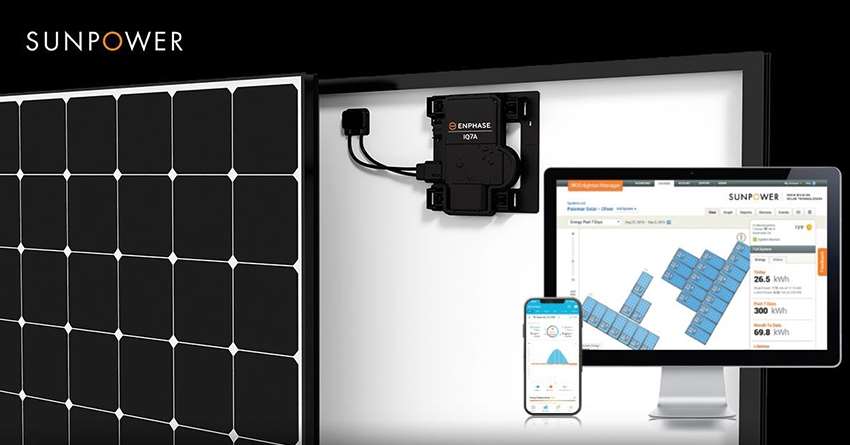What is a Microinverter on a Solar Panel?

What is a Microinverter on a Solar Panel?
What are microinverters and how do they work?
SunPower, a leader in high-efficiency solar panel modules, purchased the microinverter company SolarBridge in 2014. However, in 2018 the company sold its microinverter business to Enphase. SunPower’s AC modules, used in their Equinox systems, now employ microinverter technology built and designed by Enphase.
Inverters are an essential component of any solar panel system. They’re responsible for converting direct current energy (DC) generated at your solar panels into usable alternating current (AC) electricity for your home’s appliances. When it comes to choosing an inverter solution for your solar panel system, there are a few options to consider. In this article, we’ll go over one of the more popular types of inverter technologies: microinverters.
A solar micro-inverter, or simply microinverter, is a plug-and-play device used in photovoltaics, that converts direct current (DC) generated by a single solar module to alternating current (AC). Microinverters contrast with conventional string and central solar inverters, in which a single inverter is connected to multiple solar panels. The output from several microinverters can be combined and often fed to the electrical grid.
Microinverters have several advantages over conventional inverters. The main advantage is that they electrically isolate the panels from each other, so small amounts of shading, debris or snow lines on any one solar module, or even a complete module failure, does not disproportionately reduce the output of the entire array. Each microinverter harvests optimum power by performing maximum power point tracking (MPPT) for its connected module. Simplicity in system design, lower amperage wires, simplified stock management, and added safety are other factors introduced with the microinverter solution.With traditional string inverter technology, panels only can produce electricity at the level of the lowest-performing panel on the same string. This isn’t a problem with microinverters – because panels have their own inverter, solar panels will continue performing efficiently even if one panel in the system isn’t producing as much electricity as the others.
The size of each microinverter is dependent on the size of the panel and the amount of electricity it’s capable of producing (as determined by your geography, the tilt, direction it’s facing, and more). If your solar panel produces more electricity than its microinverter is able to convert at a given moment, “clipping” occurs, resulting in power losses.
There are many reasons to consider installing microinverters. For one, they allow for individual panel performance monitoring. With microinverters, you can compare how each panel is performing on its own, rather than solely evaluating the performance of the system alone. This can mean quicker servicing of equipment, as it’s easier to identify if a particular panel or microinverter is failing.
Microinverters are also a good solution for more complicated installations that have panels facing different directions or are tilted at varying angles. If you have some panels facing east and others facing south, using microinverters on each panel will allow them to perform to their maximum ability when sunlight hits them, as they will be not impacted by the production issues other panels in the system might experience.
Microinverters are a great investment for most solar shoppers – especially if you have a complex roof or one with partial shading. Because microinverters operate at the panel level, they don’t require power optimizers for rapid shutdown compliance and optimization. Additionally, if something’s wrong with one microinverter, this won’t shut down your whole system, just the panel attached to that single inverter. If one of your panels is underperforming, you’ll be able to identify and have your installer diagnose and fix the issue quicker than if you just had one central inverter.
It’s also easier to add more solar panels to your system in the future if you have microinverters because you won’t have to worry about the power output of a central inverter matching up with your new system size. Unlike string inverters, most microinverters are warrantied the same amount of time as the panels they’re attached to – 25 years – so you can expect them to last longer as well.
New England's #1 Solar Installer
Reach out to Viridis Energy to set up your no cost analysis with a professional solar consultant today. Get started and request your FREE SunPower quote below.
SEE HOW MUCH YOU CAN SAVE BY GOING SOLAR
CALCULATE YOUR SAVINGS
